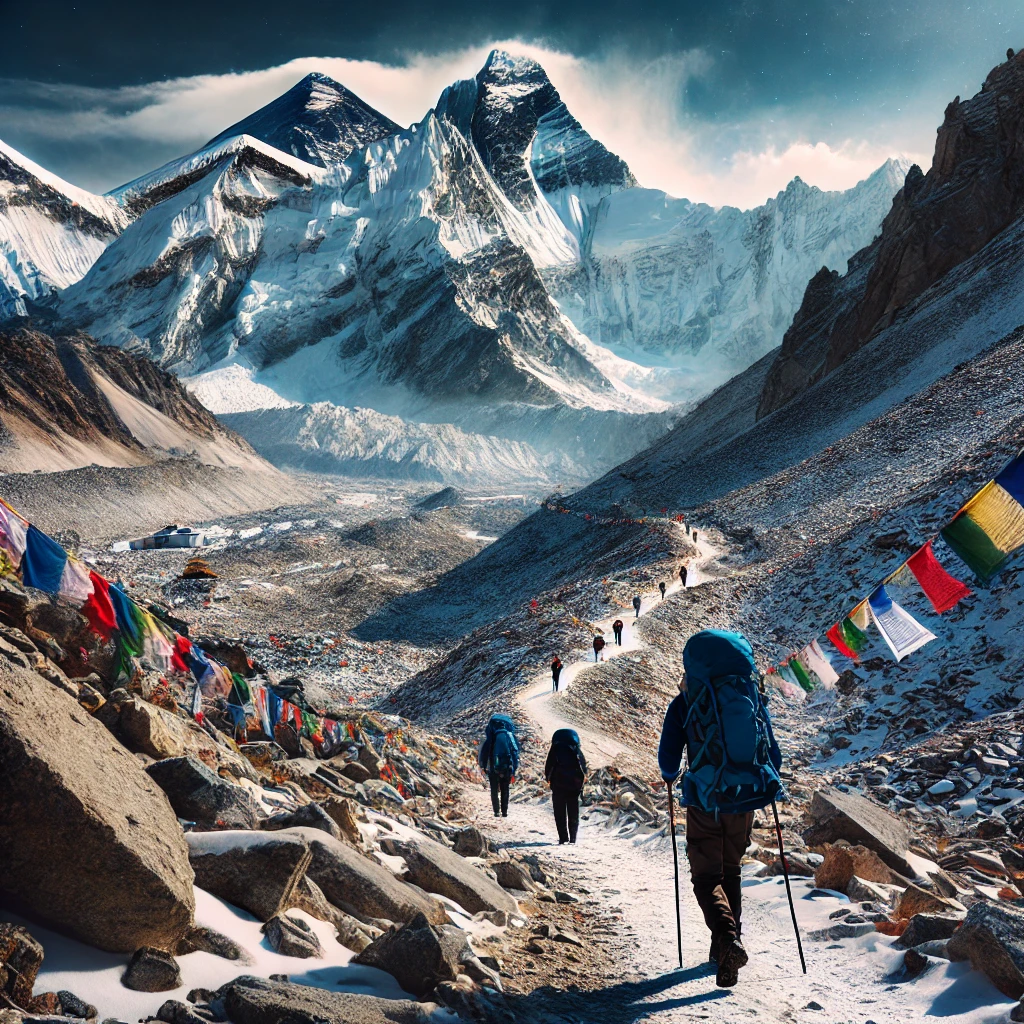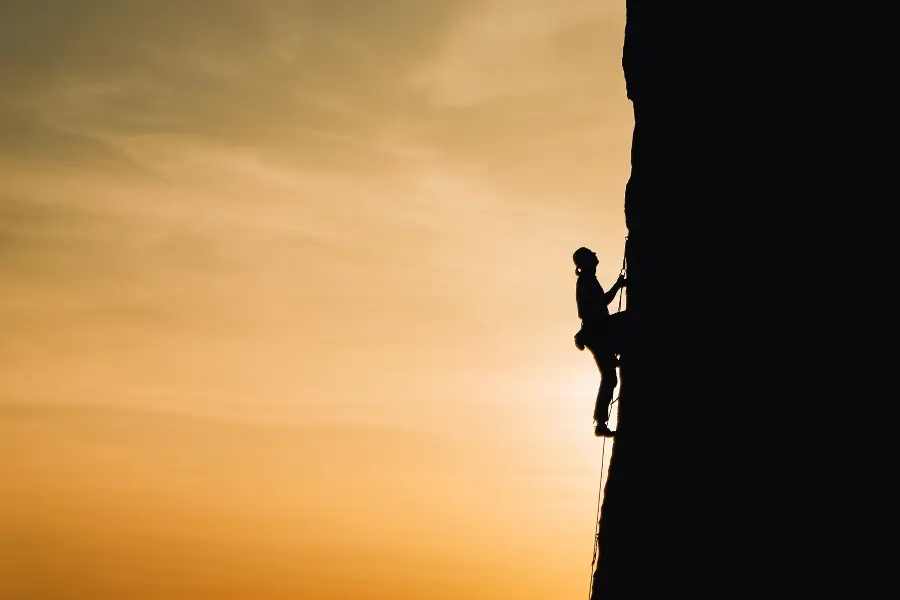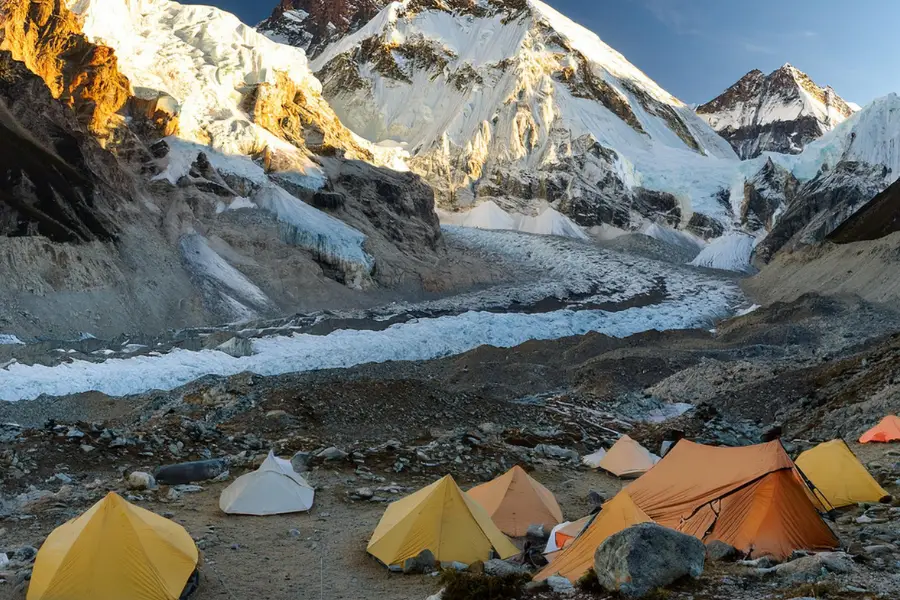Table of Contents
The Everest Base Camp Trek is one of the most iconic and sought-after trekking adventures in the world. Each year, thousands of adventurers set out on this journey, seeking to challenge themselves and witness the breathtaking beauty of the Himalayas. From the thrill of stepping foot on the trails where legendary mountaineers once walked to experience the rich culture of the Sherpas, the trek offers an experience like no other.
This guide covers every aspect of the trek, from planning and preparation to understanding the cultural significance of the region. Whether you’re a seasoned trekker or a beginner, this guide will equip you with the knowledge you need for a successful and memorable Everest Base Camp Trek.
Why Choose the Everest Base Camp Trek?
The Everest Base Camp Trek is more than just a journey to the foot of the world’s highest peak, it’s a global symbol of adventure. What makes this trek so appealing? For starters, the trek offers unparalleled access to the stunning Himalayan range, including the towering Mount Everest. But its not just about the destination; the journey itself is filled with diverse landscapes, from lush forests to stark, icy paths.
Beyond the natural beauty, the trek allows adventurers to step into the world of the Sherpa people, gaining insights into their resilient way of life. The challenge of trekking at high altitudes also adds to its allure, attracting those who seek to push their limits.
Important Statistics:
Total Trekking Distance: Approximately 130 kilometers (80 miles) round trip.
Number of Trekking Days: 12-14 days on average.
Highest Point: Kala Patthar at 5,545 meters (18,192 feet).
Planning Your Everest Base Camp Trek
Planning is the cornerstone of a successful Everest Base Camp Trek. One of the first decisions you’ll need to make is choosing the right route. The classic route from Lukla is the most popular, taking you through Namche Bazaar, Tengboche, Dingboche, and Lobuche before finally reaching Everest Base Camp.
The best time to embark on this trek is during the pre-monsoon (March-May) and post-monsoon (September-November) seasons. During these months, the weather is relatively stable, offering clear views of the Himalayan range. It’s crucial to prepare adequately, both physically and mentally. Cardiovascular training, strength exercises, and acclimatization are key components of your preparation.
The Daily Experience: What to Expect on the Trail
Each day on the Everest Base Camp brings new experiences, challenges, and breathtaking scenery. The journey begins with a thrilling flight from Kathmandu to Lukla, one of the world’s most dangerous airports. From Lukla, the trek to Phakding is relatively easy, serving as a warm-up for the days ahead.
As you ascend, the landscape changes dramatically. The path to Namche Bazaar, the Sherpa capital, is steep and challenging, but the views of Everest and Ama Dablam are incredibly rewarding. This is also where you’ll spend an extra day to acclimatize.
In the higher altitudes, such as Dingboche and Lobuche, the air becomes thinner, making each step more challenging. It’s vital to walk slowly and stay hydrated. By the time you reach Gorak Shep, the last stop before Everest Base Camp, the anticipation builds. The trek to the base camp itself is long and arduous, but the sense of achievement upon arrival is unparalleled.

Immersing in Sherpa Culture: More Than Just a Trek
The Everest Base Camp Trek is as much about cultural immersion as it is about physical challenge. The Sherpas, renowned for their mountaineering skills, are the backbone of this region. Interacting with them offers valuable insights into their way of life, deeply rooted in Tibetan Buddhism.
Along the trail, you’ll come across many stones(engraved with Buddhist prayers), chortens(stupas), and monasteries, each with a story to tell. The Tengboche Monastery is a spiritual highlight, offering trekkers a moment of peace amidst the rugged mountains.
Recommendation: Visit a local home or participate in a Sherpa festival if the timing aligns. This experience will enrich your understanding of the region culture and traditions.
Overcoming Challenges: Altitude Sickness, Weather, and Physical Demands
The Everest Base Camp Trek is not without its challenges. Altitude sickness is the most significant risk, and its crucial to recognise the symptoms early. These include headaches, nausea, dizziness, and fatigue. Acclimatization days, hydration, and a slow ascent are essential to minimize the risk.
Weather conditions in the Himalayas can be unpredictable. Even in the best trekking seasons, temperatures can drop significantly, especially at night. Be prepared for rain, snow, and strong winds.
Physically, the trek is demanding. Trekkers must be prepared to walk 5-7 hours daily, often on steep, rocky terrain. Ensuring that you are in peak physical condition before the trek will help you tackle these demands more effectively.
Table: Signs and Prevention of Altitude Sickness
| Symptom | Prevention |
| Headache | Slow ascent, hydration |
| Nausea | Acclimatization days |
| Dizziness | Avoid alcohol and smoking |
| Fatigue | Rest and proper nutrition |
Capturing the Beauty: Photography Tips for the Everest Base Camp Trek
The Everest Base Camp Trek offers countless opportunities for stunning photography. From the majestic peaks of the Himalayas to the vibrant culture of the Sherpa people, every moment is worth capturing.
However, photography in high-altitude, cold environments comes with its challenges. Battery life can be significantly reduced in cold temperatures, so carry extra batteries and keep them warm. The bright snow-covered landscapes can also lead to overexposure in photos, so adjust your camera settings accordingly.
Recommendation: Sunrise and sunset at Kala Patthar offer the best light for capturing the beauty of Mount Everest. Plan to be at the vantage point during these times for breathtaking shots.

The Grand Finale: Reaching Everest Base Camp and Beyond
Finally, after days of trekking through diverse landscapes and overcoming numerous challenges, you’ll reach Everest Base Camp. The sense of accomplishment is immense, standing at the base of the world’s tallest peak, surrounded by towering icefalls and the world’s highest mountains.
From Base Camp, many trekkers choose to climb Kala Patthar, a vantage point that offers the best views of Everest. The climb is tough, especially after the exhausting trek to Base Camp, but the panoramic views are worth every step.
As you descend back to Lukla, the journey takes on a new meaning. What was once a challenge now feels like a victory lap. The bonds formed with fellow trekkers, the memories of the landscapes, and the pride of reaching Everest Base Camp will stay with you long after you’ve returned home.
Health and Safety: Staying Healthy on the Everest Base Camp Trek
Maintaining your health on the Everest Base Camp Trek is paramount. The combination of high altitude, physical exertion, and exposure to the elements can take a toll on your body. Hydration is key—drink plenty of water and avoid alcohol, which can exacerbate dehydration.
Diet is also crucial. While the food on the trek is generally safe, stick to cooked foods and avoid raw vegetables to prevent stomach issues. Altitude sickness is the most common health concern, and knowing the symptoms can be life-saving. Always trek with a guide who is trained to handle medical emergencies.
Table: Common Health Concerns and Remedies
| Health Concern | Symptoms | Remedy |
| Altitude Sickness (AMS) | Headache, nausea, fatigue | Acclimatize,hydrate, descend if needed |
| Dehydration | Thirst,dizziness | Drink plenty of water,avoid alcohol |
| Hypothermia | Shivering ,confusion | Keep warm,stay dry, seek shelter |
Conclusion:
The Everest Base Camp Trek is more than just an adventure; it’s a trans formative experience that challenges your physical and mental limits while immersing you in the majestic beauty and rich culture of the Himalayas. From the rigorous preparation and the daily trekking challenges to the awe-inspiring landscapes and profound cultural encounters, every aspect of the journey contributes to its allure.
The trek not only brings you closer to the iconic Mount Everest but also allows you to connect deeply with the resilient Sherpa people and their spiritual traditions. While the journey is demanding, requiring careful planning, acclimatization, and respect for the environment, the rewards are immense. The sense of accomplishment upon reaching Everest Base Camp, surrounded by the world’s highest peaks, is unparalleled.
FAQs
How long does the Everest Base Camp Trek take?
The trek typically takes 12-14 days, depending on your pace and the number of acclimatisation days.
Is the Everest Base Camp Trek suitable for beginners?
While challenging, the trek is accessible to beginners who are physically fit and properly prepared.
What is the best time to trek to Everest Base Camp?
The best time is during the pre-monsoon (March-May) and post-monsoon (September-November) seasons for the best weather and views.
How do I prepare for the altitude on the trek?
Acclimatization, staying hydrated, and taking the trek slowly are key to minimizing the risks of altitude sickness.
What should I pack for the Everest Base Camp Trek?
Essential items include high-quality trekking boots, layered clothing, a reliable backpack, and travel insurance that covers high-altitude trekking.

